I am trying to create a pl/pgsql equivalent to the pandas 'ffill' function. The function should forward fill null values. In the example I can do a forward fill but I get errors when I try to create a function from my procedure. The function seems to reflect exactly the procedure but I get a syntax error at the portion ... as $1.
Why? What should I be reading to clarify?
-- Forward fill experiment
DROP TABLE IF EXISTS example;
create temporary table example(id int, str text, val integer);
insert into example values
(1, 'a', null),
(1, null, 1),
(2, 'b', 2),
(2,null ,null );
select * from example
select (case
when str is null
then lag(str,1) over (order by id)
else str
end) as str,
(case
when val is null
then lag(val,1) over (order by id)
else val
end) as val
from example
-- Forward fill function
create or replace function ffill(text, text, text) -- takes column to fill, the table, and the ordering column
returns text as $$
begin
select (case
when $1 is null
then lag($1 ,1) over (order by $3)
else $1
end) as $1
from $2;
end;
$$ LANGUAGE plpgsql;
Update 1: I did some additional experimenting taking a different approach. The code is below. It uses the same example table as above.
CREATE OR REPLACE FUNCTION GapFillInternal(
s anyelement,
v anyelement) RETURNS anyelement AS
$$
declare
temp alias for $0 ;
begin
RAISE NOTICE 's= %, v= %', s, v;
if v is null and s notnull then
temp := s;
elsif s is null and v notnull then
temp := v;
elsif s notnull and v notnull then
temp := v;
else
temp := null;
end if;
RAISE NOTICE 'temp= %', temp;
return temp;
END;
$$ LANGUAGE PLPGSQL;
CREATE AGGREGATE GapFill(anyelement) (
SFUNC=GapFillInternal,
STYPE=anyelement
);
select id, str, val, GapFill(val) OVER (ORDER by id) as valx
from example;
The resulting table is this:
I don't understand where the '1' in the first row of valx column comes from. From the raise notice output it should be Null and that seems a correct expectation from the CREATE AGGREGATE docs.

